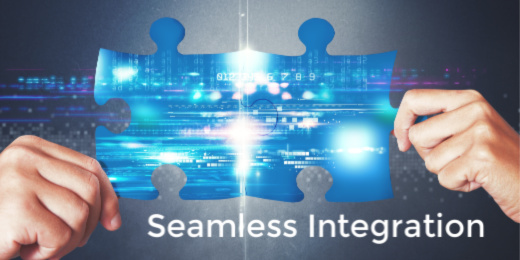Modern HCM Solutions Create Efficiencies Through REST API Connectivity

When implementing a new Human Capital Management (HCM) solution, you need something that will not only help your business function more efficiently but also work with other business systems seamlessly. This is not the case with many HMC solutions. Selecting a modern HCM platform to consolidate HR, payroll and workforce data into one employee record provides a solid foundation. But to maximize long-term ROI in the age of cloud software, it can’t be overstated that your HCM should be flexible to bridge to other critical business systems.
What API capabilities does your HCM Vendor have?
As cloud delivery of software is becoming the norm, organizations are seeing value in selecting full platforms for efficiency and automation gains. Sales has CRM, Service has case management, Operations has ERPs and so on. It is no different for HR. And the trend for HR is to select an HCM that will give efficiency and productivity benefits by consolidating disparate systems into an all-in-one HCM solution.
But your HCM data doesn’t have to be a silo. What if your HCM had the power to connect to the other critical business platforms that run your business? Most cloud software is built on modern, web architecture with API capabilities. If your HCM also offers modern API it opens the possibility for these platforms to connect user data.
The end result is less work to synchronize user accounts, streamlined communications, reduced administrative burdens, and an improved employee experience.
REST API Seamlessly Integrates With Modern Business Solutions
REST API's are the gold standard for modern web applications. REST API gives databases the ability to communicate in real time to just about any third party product that also uses a REST or even legacy API's, such as SOAP. API give clients extreme flexibility to build unique connections between complimentary systems that streamline transfer processes that would typically have to be done manually. Here are some common scenarios where an API capabilities can produce efficiencies.
Job board integrations – can the HCM push a new job requisition directly to paid and freed job boards? Or will you have to login to each site individually and cut and paste jobs by hand?
Background Checks – can the HCM trigger a background screening to a provider with the required data when the applicant process triggers the process? Or do you have submit the request manually?
Custom Learning Management System – Can your HCM solution leverage employee profiles and roles to automatically assign training in a custom LMS or industry specific training platform? Or will you have to manually enter data to keep the two data bases aligned for compliance?
Google Business Suite - Millions of businesses use google tools for business productivity. Can your HCM schedule reports to Google Drive or synch the weekly employee shift schedules to a google calendar?
User provisioning – When you hire an employee does that automatically trigger the creation of user profiles on the other business systems during onboarding? Or will you still have to email managers, IT, and system administrators individually to get email, Google, Microsoft 365, BOX, Salesforce, etc. set up for the new employee.
These are just some examples of the power of API to reduce administrative work and redundant process that eat up time. HCM services built on legacy Payroll databases will have limited to NO API capability. In contrast, modern all-in-one HCM solutions are able to connect to other cloud applications increasing the organization's ability to leverage their HR data in new ways and create cohesive unified experience that connects the employees to HR and other business systems more seamlessly.
Real-time data transfer vs. Batch System
OnePoint is a real-time system, meaning that data input into the system is seamlessly available across all modules in real-time. This is very different than HCM system that operate on legacy databases and batch payroll methodologies. Any HCM built on 20-30 year-old databases and a patchwork of applications cannot support modern API configurations. Only modern web architecture and single database solutions can create reliable API connectivity.
Integrations create possibilities for additional efficiency
During the employee lifecycle there are countless actions and changes that trigger work within the HR system and outside. And most HR teams are used to doing this extra work manually to move data from one system to another.
Whether that is auto posting a job to a job board like Indeed, or automating user account creation to streamline onboarding, or connecting your HCM data to other business systems, your HCM partner should demonstrate advanced API connectivity based on modern cloud application standards to expand the automation possibilities throughout your organization.
With a OnePoint HCM solution, you get an HCM partner with new ways to connect your employees, HR data and your business systems together seamlessly. Choosing an all-in-one platform with the potential to connect with your other business platforms provides confidence that the HCM will meet your needs today and can adapt to new priorities and requirements as they evolve.
Subscribe to updates
Get the latest posts delivered to your inbox.